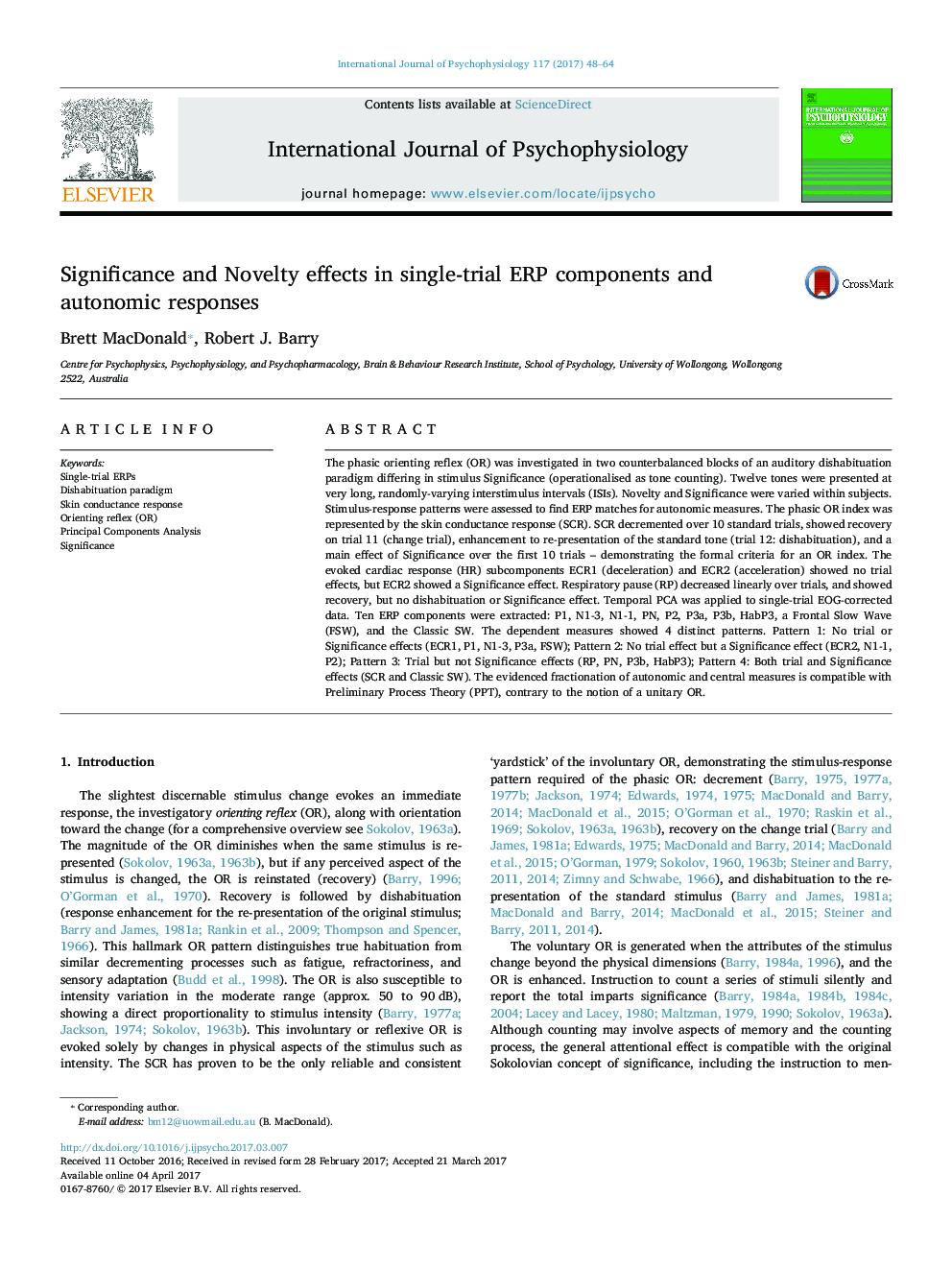| Article ID | Journal | Published Year | Pages | File Type |
|---|---|---|---|---|
| 5042236 | International Journal of Psychophysiology | 2017 | 17 Pages |
â¢Fractionation was found in autonomic and single-trial PCA-derived ERP responses.â¢Novelty and Significance manipulation grouped measures into four patterns.â¢Classic SW was the most likely ERP candidate for the phasic OR.
The phasic orienting reflex (OR) was investigated in two counterbalanced blocks of an auditory dishabituation paradigm differing in stimulus Significance (operationalised as tone counting). Twelve tones were presented at very long, randomly-varying interstimulus intervals (ISIs). Novelty and Significance were varied within subjects. Stimulus-response patterns were assessed to find ERP matches for autonomic measures. The phasic OR index was represented by the skin conductance response (SCR). SCR decremented over 10 standard trials, showed recovery on trial 11 (change trial), enhancement to re-presentation of the standard tone (trial 12: dishabituation), and a main effect of Significance over the first 10 trials - demonstrating the formal criteria for an OR index. The evoked cardiac response (HR) subcomponents ECR1 (deceleration) and ECR2 (acceleration) showed no trial effects, but ECR2 showed a Significance effect. Respiratory pause (RP) decreased linearly over trials, and showed recovery, but no dishabituation or Significance effect. Temporal PCA was applied to single-trial EOG-corrected data. Ten ERP components were extracted: P1, N1-3, N1-1, PN, P2, P3a, P3b, HabP3, a Frontal Slow Wave (FSW), and the Classic SW. The dependent measures showed 4 distinct patterns. Pattern 1: No trial or Significance effects (ECR1, P1, N1-3, P3a, FSW); Pattern 2: No trial effect but a Significance effect (ECR2, N1-1, P2); Pattern 3: Trial but not Significance effects (RP, PN, P3b, HabP3); Pattern 4: Both trial and Significance effects (SCR and Classic SW). The evidenced fractionation of autonomic and central measures is compatible with Preliminary Process Theory (PPT), contrary to the notion of a unitary OR.
